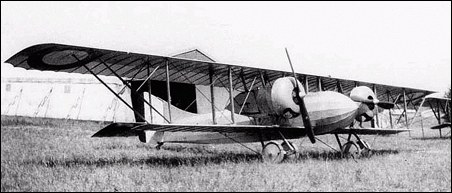|
| The first prototype flew in July 1916. A total of 512 aircraft were built.
The only feature distinguishing the Caudron G.6 from the G.4 was the former's conventional fuselage, which replaced the latter's apparently inadequate twin lattice booms for supporting the tailplane.
| ENGINE | 2 x Le Rhone, 110hp |
| WEIGHTS |
| Take-off weight | 1440 kg | 3175 lb |
| Empty weight | 940 kg | 2072 lb |
| DIMENSIONS |
| Wingspan | 17.22 m | 57 ft 6 in |
| Length | 8.60 m | 28 ft 3 in |
| PERFORMANCE |
| Max. speed | 145 km/h | 90 mph |
| Ceiling | 4400 m | 14450 ft |
| Range | 360 km | 224 miles |
| ARMAMENT | 2 x 7.7mm machine-guns, 100kg of bombs |
| lxbfYeaa, e-mail, 15.11.2025 14:02 20 reply | | lxbfYeaa, e-mail, 15.11.2025 14:02 20 reply | | lxbfYeaa, e-mail, 15.11.2025 14:02 20 reply | | lxbfYeaa, e-mail, 15.11.2025 14:01 20 reply | |
| | e, e-mail, 15.11.2025 11:13 e reply | | e, e-mail, 15.11.2025 11:13 e reply | | Klaatu, e-mail, 22.05.2011 19:49 "The only feature distinguishing the Caudron G.6 from the G.4 was the former's conventional fuselage, which replaced the latter's apparently inadequate twin lattice booms for supporting the tailplane."
The twin lattice booms supporting the tails of the Caudron G-3 and G-4 aircraft may have appeared "inadequate", but looks can sometimes be deceiving. The Caudrons were actually among the most successful aircraft of their day, being among the few aircraft to serve from the beginning of World War I till the end. reply |
|
Do you have any comments?
|
| 
All the World's Rotorcraft |






 Klaatu
Klaatu
20
reply